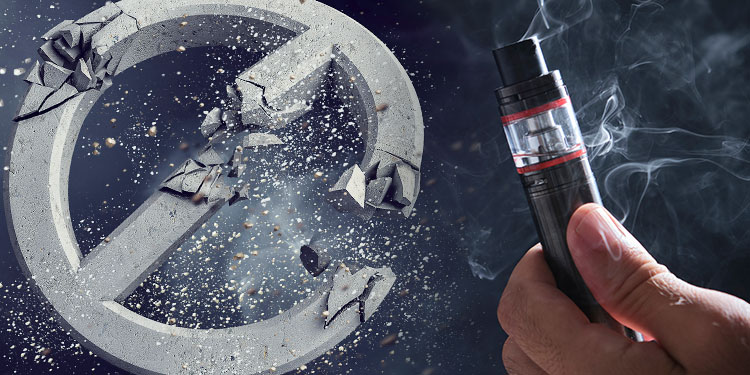
In Australia in recent months, there has been a surge in calls to regulate vape devices.
There’s just one problem.
In Australia, vape devices are currently banned. And when something is banned, you can’t regulate it.
A lesson from history


Presumably regulators thought that when they banned vaping, the many people who relied on vape products would just stop using them. While some did (with a subset going back to smoking), others have inevitably resorted to the black market.
This is, of course, history repeating itself. We know from countless examples that banning a popular product doesn’t work. The best known example is probably US alcohol prohibition – a ban which had truly disastrous consequences.
First, apart from an initial drop in alcohol sales, prohibition didn’t work. In fact, alcoholism tripled. Perhaps that is because it was often easier to buy alcohol during prohibition than before, when at least some alcohol sales were covered by regulations.
It might also be because alcoholic drinks got stronger. This is explained in part by Richard Cowan’s Iron Law of Prohibition, which states that the more a ban on a product is enforced, the more potent the product becomes. To put it simply, given the risk and the need for concealment when handling something illegal, it makes more sense to have concentrated, higher profit products than weaker, bulkier ones.
Product quality, as you can imagine, plunged. With the professional alcohol industry put out of business, people brewed alcohol in their baths, alcohol was tainted by metals and impurities, and as many as 50,000 Americans may have died from drinking moonshine. As Australia is discovering now, when you make a product illegal you relinquish all control over that product.
What’s happening in countries where vape devices are banned?

Like Australia, in India vaping was legal for a time, but is now banned. (Note: Australian vapers can still buy from abroad with a prescription, but it’s a difficult and often expensive procedure.)
There’s little official data on the impact for either territory, though for different reasons. The Indian government, which owns a stake in the largest national tobacco company, has effectively banned research into tobacco harm reduction in state funded institutes, while Australia has simply released no data on the impact of its ban.
Still, we can glean some information. In Australia, unregulated devices are smuggled by container load from China. While devices are often marked nicotine free, the actual nicotine levels are typically around 5% – more than double the 2% maximum allowed by UK regulations. With legitimate retailers forced out of business, the potential profits are huge – a device can be bought wholesale for $2-3 and sold for $25 or more. No wonder Uber drivers are selling vape kits during rides, with further reports of children buying high-strength disposables outside schools.
If the pattern follows that of prohibition in the USA, and Cohen’s Law is correct, the next step will likely be increased sophistication in this supply of black market devices, with organised crime moving in and the related problems increasing.
The benefits of (good) regulation

The black market is of course, by its nature, dominated by crooks, rather than businesses that are duty bound to care about quality. The absence of regulation to ensure products are as safe as possible creates the potential for harm for the user – a particularly cruel irony for smokers who are looking for a safer alternative to cigarettes.
Responsible retailers won’t sell vape devices to children. Those businesses care about their reputation, the industry, the ability to carry on selling and, hopefully, the children too! Outlaw a product, though, and the criminals that replace those businesses often work hard to expand their customer base by targeting young people.
Let’s contrast that to the UK. Before you can sell a product, it has to undergo emissions testing. Ingredients that are potentially harmful have been identified and banned from the devices. A yellow card scheme exists to identify problem products. Shops undergo inspections to ensure they are not selling to under age children, and the industry works hand in hand with trading standards to ensure regulations are clear, understood, and enforced.
None of that means the situation in the UK is perfect. Regulations are often misunderstood, Trading Standards are underfunded and penalties for repeatedly breaking the rules need to be harsher. But despite all that, a regulated environment beats a ban hands down – and that’s before you consider the blatant hypocrisy of banning vaping while allowing smoking itself to remain legal.

